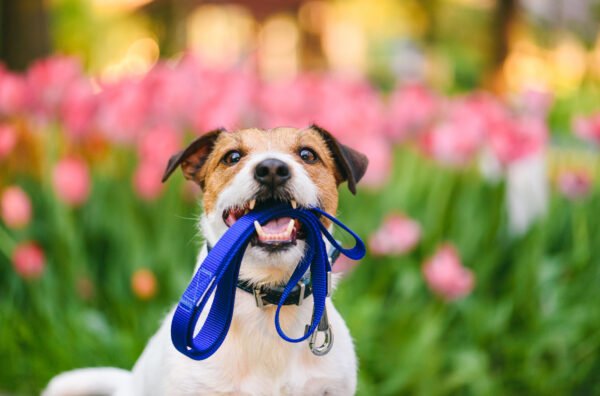
Spring is finally here! The sun has got his hat on and the garden is in beautiful bloom, but for dogs it can be a dangerous time as some of our favourite spring flowers have hidden dangers for our pet pals.
Dr Jennifer Lopez, practicing Veterinarian at Vetster, has shared four of the most common spring favourites to be wary of planting in your garden if you have dogs:
· Daffodils – Daffodils contain toxic alkaloids and glycoside which are poisonous to dogs, so be wary of letting your dog near any Daffodils, especially the bulbs as this is where the toxins are most concentrated.
· Amaryllis – They contain a substance called lycorine that has been documented to cause gastrointestinal discomfort and more severe tremors or respiratory distress in dogs and cats.
· Rhododendrons – A super common flowering shrub, the Rhododendron contains grayanotoxins which can cause serious gastrointestinal issues for dogs.
· Tulips – Tulips contain two toxic alkaloid compounds for dogs called Tulipalin A and Tulipalin B. Whilst symptoms can be mild, Tulips can cause irritation to dogs when eaten. Similar to the Daffodil, the bulbs hold the highest concentration of toxins.
Does the level of poisoning vary?
It seems common sense to say that the toxicity of the plant depends on the amount ingested and the size of the animal. It’s also logical to say that the more toxic the plant or flower, the more careful you need to be. But we all know that it can be very difficult to keep our pets out of reach of everything dangerous, however hard we try.
How soon will my pet show signs of poisoning?
This is a tricky question to answer, as it varies between animals, species, age, and which toxic plant they have eaten or been exposed to. The most common signs to look out for are gastrointestinal: vomiting, diarrhoea, drooling, or what veterinary teams like to call “ADR” or “ain’t doing right”. You should also look out for a loss of appetite, dry heaving, hiding more when they are usually active, or weakness. The more severe signs are ones that signal that certain body systems have already been affected, such as pale gums, a high heart rate, falling over, or even the yellowing of the eyes, gums, or skin. If any of these more severe signs are noted, you should immediately take your pet to the veterinary emergency clinic for in-person care.
There are a multitude of sources that you can research regarding toxic plants online, in your local library, or even download an app for your smartphone. My favourites include Animal Poison by ASPCA and the Pet Poison Helpline. When it comes down to it, if you are worried about your fur-baby, then I am worried. Schedule a Vetster consultation so either your favourite veterinarian or technician can discuss what next steps should happen in your specific case. We are always available on-demand. It’s where pet health lives.
A full list of plants toxic to dogs can be found here.
About Vetster
Vetster is a veterinary telemedicine marketplace that connects veterinary professionals with pet owners virtually over video, text or audio chat. Founded in 2020 by Mark Bordo and Regan Johnson, the marketplace has been operating in North America for 2 years and already has thousands of vets providing services to pet owners every day. From the comfort of their home, pet owners can access quality care in a matter of minutes, and veterinary professionals can set their own rates and schedule themselves according to personal preferences. Create a free account today a twww.vetster.com
